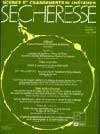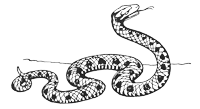The equivocal relations and the oases

The equivocal relations and the oases.
Original Title:
Les relations équivoques et les oasis, Sécheresse, Science et changements planétaires, nº 2, vol. 10, juin 1999, p. 150-151.
ISSN: 1147-7806
PDF File: https://hal.science/halshs-00122849/en/
– Résumé:
This article is an abstract of the Ph-D Thesis: The equivocal relations, Circumspect approaches for a socio-ecology of Saharan oases.
Les relations équivoques, Approches circonspectes pour une socio-écologie des oasis sahariennes, th. Anthropologie sociale, Uni. René Descartes-Sorbonne Paris V - MNHN, sept. 1998, bibl., 47 fig., 10 photog., 14 tab. + annexes, 357 p.
This works focus of attention was the relations between societies and their natural environment. The ubiquity of a disconcerting exoticism within scientific analysis, as well as the simplifying tendency to conceive the oasis as an easy to seize ‘fertile spot in the desert’, defined exclusively by the laws of its live-sustaining element water, encouraged my interest in a more complex, multi-layered model of oasian life. My biological background incites me to dedicate my work especially to palm-groves of oases. I have worked mostly in a south Tunisian region, the Jerid, but also in Djanet, South of Algeria, and finally in the Moroccan Zagora.
In the quest for the relation between oasian society and its environment, I have tried to avoid the eternal dispute on the prevalence of either nature or culture. Instead, I attempted to fuse them in favour of a non-dual explanation, fostering the ambitious aim to establish an oasian socio-ecology.
My insights on oasian nature are based on its three levels spatial structure, ranging from the expansive (oasis in general) to the confined (the garden). According to its location in space, three levels of possibility of oasian praxis are differentiated. Deriving from the organisation of space, corresponding levels of temporalities allowing those differentiated praxes can be distinguished.
It is however illusive to define an ‘oasian norm’ for the socio-ecological process. The praxes vary according to the different actors performing them. Put another way, the categories of actors of the oasian world find theirs polar co-ordinates in a conceptual space defined by ideals-types of the relation society-environment (autochthonous, orientalism, paternalism).
For all that, the ideal-type ‘autochthonous’ is not a norm that can be solely determined by either the environment or by the society. It is important to underline that there is no precedence of either society or environment as determining factor. There is a combining of both and we can evaluate their relative influence according to the oasian web of space and time.
Those circumspect approaches to the oasis’ complexity shed light on the equivocal relations of the researcher to his object, of the individual to its society, of the society to its environment.
– Go to the web site of the journal.
– Download the article (French) in pdf :


 vbat.org
vbat.org


